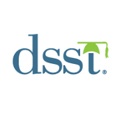
Written by DSST Credit by Exam Program
 By DSST Credit by Exam Program • December 22, 2015
By DSST Credit by Exam Program • December 22, 2015
Writing effective and professional emails to your mentors is an important part of your education. When studying in an online learning environment, it’s likely that most - if not all - of your interactions with your professor will be through email, further demonstrating the importance of maintaining a respectful and professional tone in your communications.
Aside from tone, it’s important to ensure your emails to your mentors are clear, or that they accurately convey what you’re trying to say. Your mentors are likely grading papers regularly - they won’t want to read an unnecessarily long email. But on the other hand, details matter - especially if you know that emails may be the primary form of communication between you and your mentor.
So how do you know if your emails are grammatically correct, professional and effective? Make sure you’re following these four tips and you’ll feel a bit more confident next time you write to your mentor.
It can become second nature to rely on slang or lazy language, especially when you’re participating in less formal classroom forums online. However, when addressing your mentor in a one-on-one manner, keep a keen eye on your word choice. You want your instructor to take you seriously as a learner, so be sure that your written communication commands the level of respect you deserve.
Your wording is equally important when it comes to creating the subject line for your email. Be as specific as possible without writing an unnecessarily long title. Avoid full sentences, but emphasize nouns and verbs.
Not correct: I’m having a hard time accessing the online portal for our class
Correct: Online portal assistance requested
Worried about the length or content of your email? Drafting isn’t just an effective tool when it comes to your research papers. If you find that blank email template intimidating, or if you’re just looking to quickly get all your thoughts typed out, drafting can be your best friend.
Start by quickly jotting down the important things you want to include in your email. You don’t need to chart out an intro and conclusion like you would with a more formal written work, but you do want to bullet point the main issues you want addressed in your note. After your entire email is drafted, it’s vital that you reread it at least once to ensure your grammar is correct and your sentences make sense.
An important note: Drafting does not mean, “Type whatever you want before you send it to your mentor.” Accidentally hitting that “send” button is easy, so make sure that whatever you’re typing is appropriate for your professor’s eyes.
While your emails don’t require an introduction and conclusion, there are two things you should include in any message to a mentor: a greeting and a salutation. If you’re not sure whether your email opening and closing should be formal or informal, always err on the side of professionalism. Stick with simple yet formal sign-offs, like “Sincerely” or “Best.”
When addressing your mentor at the beginning of an email, use his or her formal title. So instead of, “Hey Mr. Brown,” you’d write, “Good afternoon Professor Brown.” These subtle alterations can have a profound impact on both the quality of your email and the perception your mentor has.
Speaking of subtleties, there are a few quick checks you need to do before emailing your professor from your personal email account.

Written by DSST Credit by Exam Program